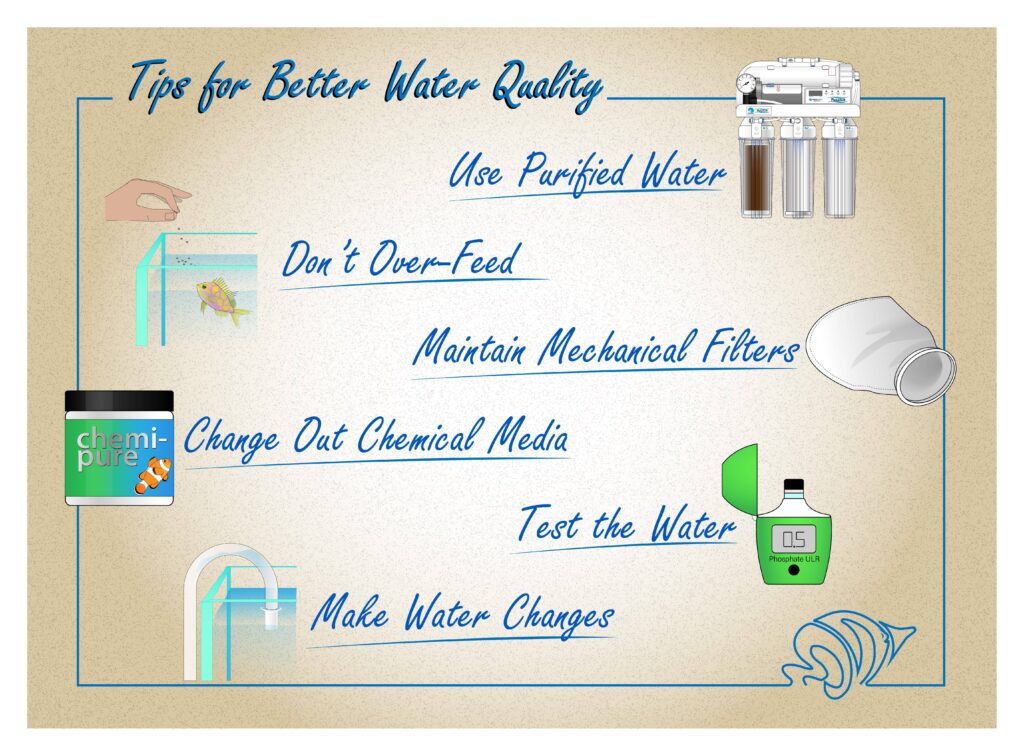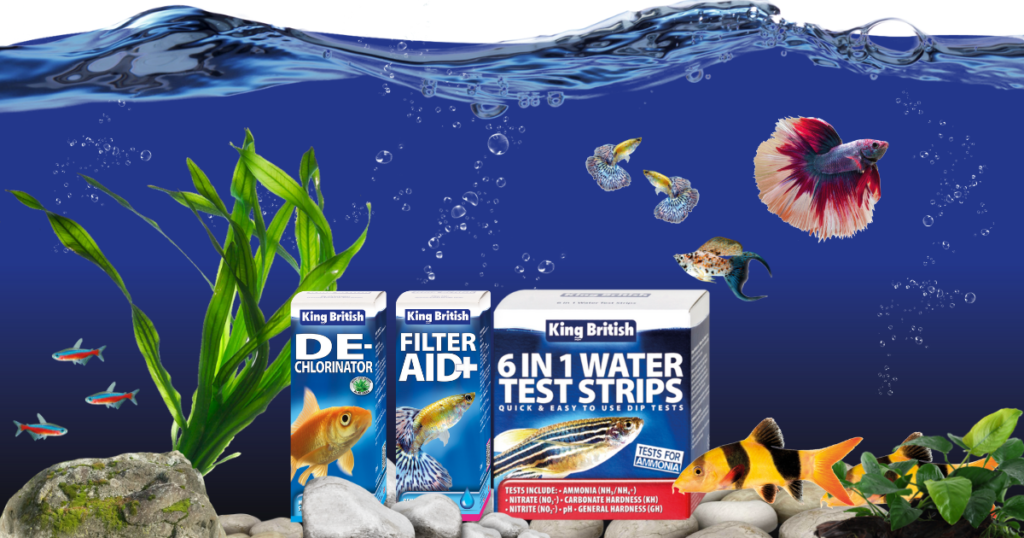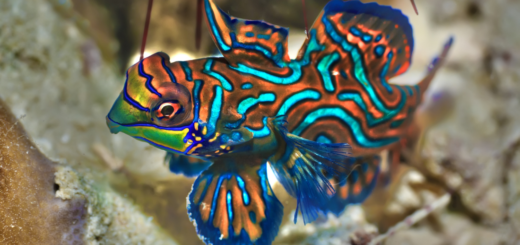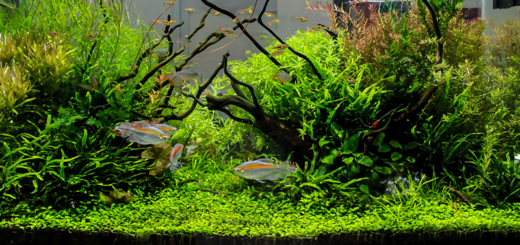Balancing Act: Maintaining Proper Water Quality In Your Fish Tank
Keeping a fish tank is a delightful hobby that brings life and beauty into your home. However, maintaining the proper water quality in your fish tank is crucial to ensure the health and well-being of your aquatic friends. From monitoring pH levels to managing ammonia and nitrate levels, this article will provide you with practical tips and insights on how to achieve the perfect balance in your fish tank’s water quality. So, get ready to dive into the world of fish tank maintenance and create a thriving aquatic paradise for your beloved fish!

This image is property of media2.cdn.bulkreefsupply.com.
Click here…Your Spirit Animal is Trying to Connect…
Water Quality Factors
Temperature
The temperature of the water in your fish tank is a crucial factor in maintaining the health and well-being of your fish. Different types of fish have different temperature requirements, so it is important to research the specific needs of the fish species you have. To regulate the temperature, you can use a heater designed for aquariums. It is recommended to use a heater with a built-in thermostat to ensure that the water stays within the desired temperature range. When placing the heater in your tank, make sure it is positioned near a water flow or in an area of good circulation to ensure even heat distribution. Regularly monitoring the temperature is essential to prevent any sudden fluctuations that could stress or harm your fish.
pH level
The pH level of the water in your fish tank is a measure of its acidity or alkalinity. Different fish species have specific pH requirements, and maintaining the proper pH level is vital for their overall health and well-being. Testing the pH level regularly using a quality test kit is essential to ensure it remains within the appropriate range. If the pH level is too high or too low, you can adjust it using pH adjusters specifically designed for aquarium use. It is also possible to naturally adjust the pH level by adding certain types of rocks or driftwood to your tank. However, it is important to research the specific needs of your fish species and consult with experts to ensure a safe and suitable environment for your fish.
Ammonia levels
Ammonia is highly toxic to fish and can be produced by various sources, such as uneaten food, fish waste, and decaying organic matter. Monitoring the ammonia levels in your fish tank is crucial, as high levels can be fatal to your fish. Testing for ammonia regularly using a reliable test kit is imperative to catch any spikes or abnormal levels. To maintain proper filtration, ensure you have a suitable filter that can effectively remove ammonia. Performing regular water changes is also essential to dilute and remove any accumulated ammonia. Additionally, introducing beneficial bacteria into your tank can help establish a healthy biological filter, as they naturally convert ammonia into less harmful substances.
Nitrite levels
Similarly to ammonia, nitrite is toxic to fish and can lead to serious health problems. Nitrite is produced during the breakdown of ammonia by beneficial bacteria. Testing for nitrite levels using a reliable test kit is crucial to detect any abnormal spikes. Addressing nitrite spikes primarily involves increasing biological filtration. This can be done by ensuring you have a sufficient amount of beneficial bacteria in your tank, especially in your filter media. Reducing organic waste, such as uneaten food and decaying matter, through regular maintenance and cleaning can also help control nitrite levels. Proper monitoring and immediate action are essential to prevent harm to your fish.
Nitrate levels
Nitrate, unlike ammonia and nitrite, is less toxic to fish but can still be harmful in higher concentrations. Nitrate is a byproduct of the biological filtration process and can accumulate over time if not properly managed. Testing for nitrate levels using a reliable test kit is important to keep them within the desired range. Performing regular water changes is an effective method to control nitrate levels, as it helps remove accumulated nitrates. Additionally, using nitrate-absorbing media, such as specific types of filter media or live plants, can further assist in maintaining optimal nitrate levels. Limiting feeding and waste production through proper feeding techniques can also help prevent excessive nitrate buildup.
Dissolved oxygen levels
Dissolved oxygen is vital for the overall health and survival of your fish. Adequate oxygen levels ensure that your fish can breathe properly and thrive. Proper aeration is important to maintain optimal dissolved oxygen levels in your fish tank. This can be achieved by using air pumps and diffusers, which create bubbles and enhance water movement. Increasing surface agitation, such as using a powerhead or adjusting the flow of your filter outlet, can also help improve oxygenation. It is important to choose fish species that are not highly oxygen-demanding if you have limited aeration in your tank. Regular monitoring of dissolved oxygen levels using test kits is important to ensure a healthy environment for your fish.
Hardness
Water hardness refers to the mineral content present in the water, primarily the concentration of calcium and magnesium ions. Different fish species have specific hardness preferences, so it is important to research and understand the requirements of your fish. Testing the water hardness using a reliable test kit can help you determine the current levels. Adjusting the hardness can be achieved by using commercially available aquarium additives or through processes like reverse osmosis. It is important to consider the compatibility of your fish species with the desired hardness levels to avoid any adverse effects on their health and well-being.
Chlorine and chloramine levels
Chlorine and chloramine are commonly found in tap water and can be harmful to fish. Before adding tap water to your fish tank, it is essential to treat it to remove these chemicals. There are various water conditioners available that neutralize chlorine and chloramine, making the water safe for your fish. Following the instructions on the water conditioner product is crucial to ensure effective removal of these harmful substances. Testing for chlorine and chloramine levels in your tap water using a reliable test kit can help you determine the appropriate dosage of the water conditioner. Additionally, allowing the tap water to sit for a period of time before adding it to your tank can help dissipate some of these chemicals, although it is not as reliable as using a water conditioner.
Salinity
Salinity refers to the amount of salt dissolved in the water and is typically more relevant for saltwater or brackish aquariums. Managing salinity levels is important for maintaining the proper osmotic balance for your marine or brackish water fish. Testing the salinity using a refractometer or hydrometer is crucial to ensure it remains within the desired range. Adjusting salinity levels can be achieved by adding or diluting saltwater or using marine salt mix specifically designed for aquarium use. It is important to research the specific salinity requirements of your fish species and maintain stable salinity to prevent stress and health issues.
Light exposure
Light plays a crucial role in the overall health and behavior of your fish. It impacts their natural day-night cycles, metabolism, and even their breeding patterns. Balancing light intensity is important to provide the right amount of light for your fish. Some fish species require bright light, while others prefer dimmer conditions. Controlling the photoperiod, the duration of light exposure, is essential to mimic natural conditions and prevent excessive stress or algae growth. Choosing appropriate lighting fixtures that provide the right spectrum and intensity for your fish and plants, if present, is important for their well-being. Avoiding excessive algae growth can be achieved by maintaining proper nutrient levels, limiting light exposure, and regular maintenance practices such as cleaning and water changes.

This image is property of cdn.evance.me.
Click here…Your Spirit Animal is Trying to Connect…
Monitoring Water Quality
Frequency of testing
Regular testing of your fish tank water is crucial for maintaining optimal water quality. The frequency of testing will depend on various factors such as the size of your tank, the number of fish, the filtration system, and the specific needs of your fish species. As a general guideline, testing should be conducted at least once a week for ammonia, nitrite, nitrate, pH, and temperature. Dissolved oxygen and salinity, if applicable, should also be monitored regularly. Monitoring water quality parameters helps identify any issues early on, allowing you to take immediate action and prevent potential problems.
Testing methods
There are various testing methods available to monitor the water quality in your fish tank. The most common and widely used method is the use of test kits. Test kits usually contain test tubes, reagents, and color charts to compare the results. These kits are designed for testing parameters such as pH, ammonia, nitrite, nitrate, and sometimes even dissolved oxygen. It is essential to follow the instructions provided with the test kits carefully to obtain accurate results. In addition to test kits, some advanced aquarium systems may have built-in monitoring devices or probes that can measure and display various water parameters.
Test kits
Test kits are essential tools for monitoring water quality in your fish tank. They allow you to measure different parameters such as pH, ammonia, nitrite, nitrate, and sometimes even dissolved oxygen. When purchasing test kits, it is important to choose reliable and accurate ones. Reading reviews and consulting with experienced hobbyists or professionals can help you select the best test kits for your needs. Keep in mind that test kits for specific parameters may need to be purchased separately or as part of a comprehensive kit. Regularly replacing test kit reagents and ensuring proper storage is important to maintain accurate results.
Water quality parameters to monitor
There are several water quality parameters that should be regularly monitored to ensure a healthy and thriving fish tank environment. These parameters include ammonia levels, nitrite levels, nitrate levels, pH level, temperature, dissolved oxygen levels, and, if applicable, salinity. Monitoring these parameters allows you to identify any issues promptly and take appropriate action to maintain optimal water quality for your fish. Remember that different fish species may have specific water quality requirements, so it is important to research and understand the needs of your fish to create the best possible environment for them.
Record keeping
Maintaining a record of your water quality parameters is essential for tracking changes over time and identifying any trends or fluctuations. Keeping a log of your test results, along with relevant notes such as water changes, additions of chemicals or additives, and any observed changes in fish behavior, can help you troubleshoot any problems that may arise. Record keeping allows you to have a clear picture of your tank’s history and can be helpful in seeking advice or assistance from aquarium experts or professionals. It is also useful when introducing new fish species or making changes to your tank setup.









